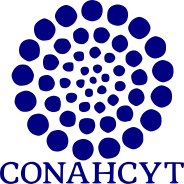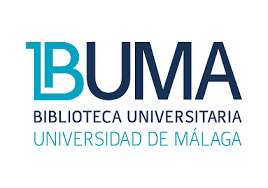Etnoflora comestible de los tepehuanos del sur de Durango, México
Palabras clave:
patrimonio biocultural, Mezquital, O´dam, Sierra Madre Occidental, plantas útiles.Resumen
Parte fundamental del patrimonio biocultural mexicano es el conocimiento tradicional sobre plantas comestibles. Actualmente existen avances significativos sobre la documentación de estos recursos a escala nacional; sin embargo, aún existen áreas geográficas y grupos étnicos escasamente estudiados. El objetivo de este trabajo fue sistematizar, analizar y discutir la información sobre plantas silvestres comestibles utilizadas por los tepehuanes del sur de Durango, México. En base a trabajo de campo, reportes técnicos de información etnobotánica y ejemplares de herbario, se generó una base de datos sobre aspectos taxonómicos, ecológicos y etnobotánicos de cada taxa registrado. Adicionalmente, se prepararon sendos listados de especies de plantas silvestres comestibles reportadas en la literatura para los otros tres grupos étnicos principales de la Sierra Madre Occidental. La información se analizó en términos de composición taxonómica, riqueza, distribución ecológica, formas de manejo y patrones de uso. Se registró un total de 122 especies, 85 géneros y 46 familias. Asparagaceae, Asteraceae, Cactaceae, Fabaceae y Solanaceae representan el 39% del total de especies. Los géneros con mayor riqueza de especies son Agave (9), Opuntia y Physalis (4 cada uno), y Begonia, Dahlia y Tagetes (3 cada uno). La comparación de esta etnoflora con la de otros tres grupos étnicos de la Sierra Madre Occidental (huicholes, tarahumaras y tepehuanes del norte), sugiere un patrón similar en cuanto a riqueza de especies y composición taxonómica. Los frutos fueron la parte vegetal registrada con mayor frecuencia; la categoría de alimentos crudos tuvo un mayor número de especies; y la recolección fue la principal forma de manejo. Este inventario llena un importante vacío de información y es la base del desarrollo de nuevas investigaciones y estrategias para el aprovechamiento y conservación del patrimonio biocultural en Durango.
Referencias
Ali-Shtayeh, M. S., Jamous, R. M., Al-Shafie’, J. H., Elgharabah, W. A., Kherfan, F. A., Qarariah, K. H., Khdair, I. S., Soos, I. M., Musleh, A. A., Isa, B. A., Herzallah, H. M., Khlaif, R. B., Aiash, S. M., Swaiti, G. M., Abuzahra, M. A., Haj-Ali, M. M., Saifi, N. A., Azem, H. K., & Nasrallah, H. A. (2008). Traditional knowledge of wild edible plants used in Palestine (Northern West Bank): a comparative study. Journal of Ethnobiology and Ethnomedicine, 4(1), 13. https://doi.org/10.1186/1746-4269-4-13
APG IV (The Angiosperm Phylogeny Group). (2016). An update of the Angiosperm Phylogeny Group classification for the orders and families of flowering plants: APG IV. Botanical Journal of the Linnean Society, 181(1), 1–20. https://doi.org/10.1111/boj.12385
Arriaga-Cabrera, L., Espinoza-Rodríguez, J. M., Aguilar-Zúñiga, C., Martínez Romero, E., Gómez-Mendoza, L., & Loa-Loza, E. (2000). Regiones terrestres prioritarias de México. D.F., México: Comisión Nacional para el Conocimiento y Uso de la Biodiversidad.
Barba-de la Rosa, A. P., Frias-Hernández, J. T., Olalde-Portugal, V., & González-Castañeda, J. (2006). Processing, nutritional evaluation, and utilization of whole mesquite flour (Prosopis laevigata). Journal of Food Science, 71(4), 315–319. https://doi.org/10.1111/j.1750-3841.2006.00001.x
Benítez, G., Molero-Mesa, J., & González-Tejero, M. R. (2017). Gathering an edible wild plant: Food or medicine? A case study on wild edibles and functional foods in Granada, Spain. Acta Societatis Botanicorum Poloniae, 86(3). https://doi.org/10.5586/asbp.3550
Boege, E. (2008). El patrimonio biocultural de los pueblos indígenas de México: hacia la conservación in situ de la biodiversidad y agrodiversidad en los territorios indígenas. D.F., México: Instituto Nacional de Antropología e Historia and Comisión Nacional para el Desarrollo de los Pueblos Indígenas.
Bortolotto, I. M., Mello-Amorozo, M. C., Guarim-Neto, G., Oldeland, J., & Damasceno-Junior, G. A. (2015). Knowledge and use of wild edible plants in rural communities along Paraguay River, Pantanal, Brazil. Journal of Ethnobiology and Ethnomedicine, 11(1), 46. https://doi.org/10.1186/s13002-015-0026-2
Bye, R. A., Burgess, D., & Mares-Trias, A. (1975). Ethnobotany of the western Tarahumara of Chihuahua, I: notes on the genus Agave. Botanical Museum Leaflets of Harvard University, 24, 85-112.
Bye, R. A. (1981). Quelites – Ethnoecology of edible greens – past, present and future. Journal of Ethnobiology, 1(1), 109-123.
Bye, R. (1995). Prominence of the Sierra Madre Occidental in the biological diversity of Mexico. In L. F. DeBano, P. F. Ffolliott, A. Ortega Rubio, G. J. Gottfried, R. H. Hamre & C. B. Edminster (Coords.), Biodiversity and management of the Madrean archipelago: The sky islands of Southwestern United States and Northwestern Mexico (pp. 19-27). USA: United States Department of Agriculture Forest Service, General Technical Report RM 264.
Caballero, J., & Mapes, C. (1985). Gathering and subsistence patterns among the P'urhepecha Indians of Mexico. Journal of Ethnobiology, 5(1), 31-47.
Caballero, J., Casas, A., Cortés, L., & Mapes, C. (1998). Patrones en el conocimiento, uso y manejo de plantas en pueblos indígenas de México. Revista de Estudios Atacameños, (16), 181-195.
Caballero, J., & Cortés, L. (2001). Percepción, uso y manejo tradicional de los recursos vegetales en México. In B. Rendón, S. Rebollar, J. Caballero & M. A. Martínez (Eds.), Plantas, cultura y sociedad. Estudio sobre la relación entre seres humanos y plantas en los albores del siglo XXI (pp. 79-100). México, D.F.: Universidad Autónoma Metropolitana and Secretaría de Medio Ambiente y Recursos Naturales.
Cahill, J. (2003). Ethnobotany of Chia, Salvia hispanica L. (Lamiaceae). Economic Botany 57(4), 604-618. https://doi.org/10.1663/0013-0001(2003)057[0604:EOCSHL]2.0.CO;2
Camou-Guerrero, A. (2008). Los recursos vegetales en una comunidad Rarámuri: aspectos culturales, económicos y ecológicos (Doctoral Dissertation). Centro de Investigaciones en Ecosistemas, UNAM, México.
Carvalho, A. M., & Barata, A. M. (2016). The Consumption of Wild Edible Plants. In I. Ferreira, P. Morales, & L. Barros (Eds.), Wild Plants, Mushrooms and Nuts: Functional Food Properties and Applications (pp. 159-198). Chichester, United Kingdom: John Wiley & Sons, Ltd.
Casas, A., Viveros, J., & Caballero, J. (1994). Etnobotánica mixteca: sociedad, cultura y recursos naturales en la Montaña de Guerrero. México: Consejo Nacional para la Cultura y las Artes e Instituto Nacional Indigenista.
Casas, A., Otero-Arnaiz, A., Pérez-Negrón, E., & Valiente-Banuet, A. (2007). In situ Management and Domestication of Plants in Mesoamerica. Annals of Botany, 100(5), 1101–1115. https://doi.org/10.1093/aob/mcm126
Christenhusz M. J. M., Reveal, J. L., Farjon, A., Gardner, M. F., Mill, R. R., & Chase, M. W. (2011). A new classification and linear sequence of extant gymnosperms. Phytotaxa, 19, 55–70. http://dx.doi.org/10.11646/phytotaxa.19.1.3
CONABIO (Comisión Nacional para el Conocimiento y Uso de la Biodiversidad). (2017). Biodiversidad Mexicana, ¿Qué es un país megadiverso?. Retrieved August 12, 2017, from http://www.biodiversidad.gob.mx/pais/quees.htm.
Cramaussel, C. (2013). El sistema de cargos en San Bernardino de Milpillas Chico, Durango. Culturales, 1(1), 69-104.
Delang, C. O. (2006). The role of wild food plants in poverty alleviation and biodiversity conservation in tropical countries. Progress in Development Studies, 6(4), 275–286. https://doi.org/10.1191/1464993406ps143oa
Eriksson, O. (2016). Evolution of angiosperm seed disperser mutualisms: the timing of origins and their consequences for coevolutionary interactions between angiosperms and frugivores. Biological reviews, 91(1), 168-186. https://doi.org/10.1111/brv.12164
Fielder, H., Brotherton, P., Hosking, J., Hopkins, J. J., Ford-Lloyd, B., & Maxted, N. (2015). Enhancing the conservation of crop wild relatives in England. PLoS ONE, 10(6), e0130804. https://doi.org/10.1371/journal.pone.0130804
Frías-Castro, A., Castro-Castro, A., González-Gallegos, J. G., Suárez-Muro, E. A., & Rendón-Sandoval, F. J. (2013). Flora vascular y vegetación del cerro El Tepopote, Jalisco, México. Botanical Sciences, 91(1), 53-74. https://doi.org/10.17129/botsci.402
García-Salido, G., & Reyes-Valdez, J. A. (2017). Apuntes para la dialectología del tepehuano del sur. Expedicionario, Revista de Estudios en Antropología, 3(6), 33-46.
Gentry, H. S. (1982). Agaves of Continental North America. Tucson, Arizona, USA: The University of Arizona Press.
Grivetti, L. E., & Ogle, B. M. (2000). Value of traditional foods in meeting macro-and micronutrient needs: the wild plant connection. Nutrition Research Reviews, 13(1), 31-46. https://doi.org/10.1079/095442200108728990
González-Elizondo, M. (1991). Ethnobotany of the Southern Tepehuan of Durango, Mexico: I. Edible Mushrooms. Journal of Ethnobiology, 11(2), 165-173.
González-Elizondo, M., & Galván, R. (1992). El maguey (Agave spp.) y los Tepehuanes de Durango. Cactáceas y Suculentas Mexicanas, (37), 3-11.
González-Elizondo, M., & González-Elizondo, M. S. (1994). Flora Medicinal Tepehuana del Sur de Durango. In A. Aguilar, A. Argueta & L. Cano (Coords.), Flora Medicinal Indígena de México (vol. 1, pp. 455-530). México, D.F.: Instituto Nacional Indigenista.
González-Elizondo, M., & Ávila-Reyes, J. A. (2000). Los Tepehuanes. Dos grupos étnicos de la Sierra Madre Occidental. Interciencia (CIIDIR), 1(2), 65-73.
González-Elizondo, M., González-Elizondo, M. S., López-Enríquez, L., & Tena-Flores, J. A. (2001). Herbolaria Tepehuana. Interciencia (CIIDIR), 1(1), 1-13.
González-Elizondo, M., López-Enríquez, L., González-Elizondo, M. S., & Tena-Flores, J. A. (2004). Plantas medicinales del estado de Durango y zonas aledañas. México: Centro Interdisciplinario de Investigación para el Desarrollo Integral Regional, Unidad Durango, Instituto Politécnico Nacional.
González-Elizondo, M., González-Elizondo, M. S., López-Enríquez, I. L., & Herrera-Arrieta, Y. (2017). Importancia económica y usos tradicionales de la flora. In A. Cruz-Angón, E. Castaños-Rochell, J. Valero-Padilla & E. Melgarejo (Coords.), La biodiversidad en Durango. Estudio de Estado (pp. 513-528). México: Comisión Nacional para el Conocimiento y Uso de la Biodiversidad.
González-Elizondo, M. S., González-Elizondo, M., & López, L. (1997). Biodiversidad y endemismo de plantas vasculares en Durango, México. Acta Mexicana de Ciencia y Tecnología, 12(42), 49-58.
González-Elizondo, M. S. (1997). Upper Mezquital River region, Sierra Madre Occidental, Mexico. In D. Davis, V. H. Heywood, O. Herrera-MacBryde, J. Villa-Lobos & A. C. Hamilton (Eds.), Centres for plant diversity: a guide and strategy for their conservation (vol. 3, pp. 157-160). The World Wide Fund for Nature (WWF) and IUCN-The World Conservation Union.
González-Elizondo, M. S., González-Elizondo, M., Tena-Flores, J. A., Ruacho González, L., & López-Enriquez, I. L. (2012). Vegetación de la Sierra Madre Occidental, México: una síntesis. Acta Botánica Mexicana, (100), 351-403. https://doi.org/10.21829/abm100.2012.40
González-Elizondo, M. S., González-Elizondo, M., Tena-Flores, J. A., López-Enriquez, I. L., Ruacho-González, L., Retana-Rentería, F. I., & Delgado-Zamora, A. (2013). Ericáceas en la Sierra Madre Occidental, México: diversidad y distribución. Ibugana, (4), 97-108.
González-Elizondo, M. S., González-Elizondo, M., López-Enríquez, I. L., Tena-Flores, J. A., González-Gallegos, J. G., Ruacho-González, L., Melgoza-Castillo, A., Villarreal-Quintanilla, J.Á., & Estrada-Castillón, A. E. (2017b). Diagnóstico del conocimiento taxonómico y florístico del norte de México. Botanical Sciences, 95(4), 760-779. https://doi.org/10.17129/botsci.1865
Guil-Guerrero, J. L., & Torija-Isasa, M. E. (1997). Nutritional composition of leaves of Chenopodium species (C. album L., C. murale L. and C. opulifolium Shraeder). International Journal of Food Sciences and Nutrition, 48(5), 321-327. https://doi.org/10.3109/09637489709028578
Guízar-Miranda, A. (2009). Obtención y caracterización física y química del almidón de “camote de cerro” (Dioscorea spp.) (Master’s thesis). Centro Interdisciplinario de Investigación para el Desarrollo Integral Regional, Unidad Michoacán, Instituto Politécnico Nacional, Michoacán, México.
Hall, A. (1976). The Wild Food Trailguide (2a ed.). New York, USA: Holt, Rinehart and Winston.
Hedrick, U. P. (1972). Sturtevant´s Edible Plants of the World. New York, USA: Dover Publications.
Iturriaga, J. N. (2012). La cocina mexicana, patrimonio cultural de la Humanidad. In L. Rubio & G. Ponce (Eds.), Gestión del patrimonio arquitectónico, cultural y medioambiental: enfoques y casos prácticos (pp. 153-158). España y México: Universidad de Alicante and Universidad Autónoma Metropolitana.
Ju, Y., Zhuo, J., Liu, B., & Long, C. (2013). Eating from the wild: diversity of wild edible plants used by Tibetans in Shangri-la region, Yunnan, China. Journal of Ethnobiology and Ethnomedicine, 9(1), 28. https://doi.org/10.1186/1746-4269-9-28
Kalle, R., & Sõukand, R. (2013). Wild plants eaten in childhood: a retrospective of Estonia in the 1970s–1990s. Botanical Journal of the Linnean Society, 172(2), 239-253. https://doi.org/10.1111/boj.12051
Kell, S., Qin, H., Chen, B., Ford-Lloyd, B., Wei, W., Kang, D., & Maxted, N. (2015). China’s crop wild relatives: diversity for agriculture and food security. Agriculture, Ecosystems and Environment, 209, 138-154. https://doi.org/10.1016/j.agee.2015.02.012
Kujawska, M., & Łuczaj, Ł. (2015). Wild Edible Plants Used by the Polish Community in Misiones, Argentina. Human Ecology, 43(6), 855–869. https://doi.org/10.1007/s10745-015-9790-9
Laferrière, J. E., Weber, C. W., & Kohlhepp, E. A. (1991). Use and nutritional composition of some traditional Mountain Pima plant foods. Journal of Ethnobiology, 11(1), 93-114.
Mapes, C., & Basurto, F. (2016). Biodiversity and Edible Plants of Mexico. In R. Lira, A. Casas & J. Blancas (Eds.), Ethnobotany of Mexico (pp. 83-126). New York, USA: Springer. https://doi.org/10.1007/978-1-4614-6669-7_5
Mendoza-Mayorga, I., Salgado-Cortés, A., Jiménez-Granados, M., Ortiz-Polo, A., & Ramírez-Moreno, E. (2018). Elaboración de yogurt de pitaya roja (Hylocereus undatus). Educación y Salud Boletín Científico de Ciencias de la Salud del ICSa, 6(12).
Moerman, D. E., Pemberton, R. W., Kiefer, D., & Berlin, B. (1999). A comparative analysis of five medicinal floras. Journal of Ethnobiology, 19(1), 49-70.
Nabhan, G. (2005). Biocultural diversity and its conservation in the Mother Mountains. In G. J. Gottfried, B. S. Gebow, S. Brooke, L. G. Eskew & C. B. Edminster (Comps.), Biodiversity and management of the Madrean Archipelago II: Connecting mountain islands and desert seas (pp. 47). Tucson, Arizona, USA: United States Department of Agriculture, Forest Service, Rocky Mountain Research Station, Proceedings RMRS-P-36.
Navarrete-Linares, F. (2008). Los pueblos indígenas de México. D.F., México: Comisión Nacional para el Desarrollo de los Pueblos Indígenas.
Nieves-Hernández, G. (2002). Flora vascular del norte de Jalisco y su uso tradicional por la etnia huichola, Jalisco, México (Master’s Thesis). Centro Universitario de Ciencias Biológicas y Agropecuarias, Universidad de Guadalajara, Guadalajara, México.
Ojelel, S., Mucunguzi, P., Katuura, E., Kakudidi, E. K., Namaganda, M., & Kalema, J. (2019). Wild edible plants used by communities in and around selected forest reserves of Teso-Karamoja region, Uganda. Journal of Ethnobiology and Ethnomedicine, 15(1), 3. https://doi.org/10.1186/s13002-018-0278-8
Ortíz-Quijano, A. B. (2007). Plantas comestibles utilizadas por los otomíes de San Antonio El Grande, Huehuetla, Hidalgo (Bachelor’s Thesis). Universidad Autónoma del Estado de Hidalgo, Hidalgo, México.
Pardo-de Santayana, M., Tardío, J., Blanco, E., Carvalho, A. M., Lastra, J. J., San Miguel, E., & Morales, R. (2007). Traditional knowledge of wild edible plants used in the northwest of the Iberian Peninsula (Spain and Portugal): a comparative study. Journal of Ethnobiology and Ethnomedicine, 3(1), 27. https://doi.org/10.1186/1746-4269-3-27
Pennington, C. W. (1969). The Tepehuan of Chihuahua, their material culture. Salt Lake City, USA: University of Utah Press.
Phillips, O., & Gentry, A. H. (1993). The useful plants of Tambopata, Peru: I. Statistical hypotheses tests with a new quantitative technique. Economic Botany, 47(1), 15-32. https://doi.org/10.1007/BF02862203
Rangel-Landa, S., Casas, A., García-Frapolli, E., & Lira, R. (2017). Sociocultural and ecological factors influencing management of edible and non-edible plants: the case of Ixcatlán, Mexico. Journal of Ethnobiology and Ethnomedicine, 3(1), 59. https://doi.org/10.1186/s13002-017-0185-4
Redzic, S. (2006). Wild edible plants and their traditional use in the human nutrition in Bosnia-Herzegovina. Ecology of Food and Nutrition, 45(3): 189-232. https://doi.org/10.1080/03670240600648963
Redžić, S. (2010). Use of wild and semi-wild edible plants in nutrition and survival of people in 1430 days of siege of Sarajevo during the war in Bosnia and Herzegovina (1992–1995). Collegium Antropologicum, 34(2), 551-570.
Reyes-Valdez, J. A. (2006). Tepehuanes del Sur. Pueblos indígenas del México contemporáneo. México: Comisión Nacional para el Desarrollo de los Pueblos Indígenas.
Reyes-Valdez, J. A. (2007). Los alimentos de los dioses. La tradición culinaria de los tepehuanes del sur de Durango. Transición, (35), 59-79.
Rivas-Vega, J., Solís-Arellano, Y., & Flores-Domene, A. (2000). Recetario tepehuano de Chihuahua y Durango, Cocina Indígena y Popular (no. 53). México: Consejo Nacional para la Cultura y las Artes.
Rivera, G., Bocanegra-García, V., & Monge, A. (2010). Traditional plants as source of functional foods: a review. Journal of Food, 8(2): 159-167. https://doi.org/10.1080/19476330903322978
Ruelle, M. L., Asfaw, Z., Dejen, A., Tewolde-Berhan, S., Nebiyu, A., Tana, T., & Power, A. G. (2019). Inter- and intraspecific diversity of food legumes among households and communities in Ethiopia. PLoS ONE, 14(12), e0227074. https://doi.org/10.1371/journal.pone.0227074
Rzedowski, J. (1978). Vegetación de México. México, D.F.: Editorial Limusa.
Sánchez-Olmedo, J. G. (1980). Etnografía de la Sierra Madre Occidental: tepehuanes y mexicaneros (vol. 92). México: Secretaría de Educación Pública e Instituto Nacional de Antropología e Historia.
Shaheen, S., Ahmad, M., and Haroon, N. (2017). Edible Wild Plants: An alternative approach to food security. Switzerland: Springer International Publishing. https://doi.org/10.1007/978-3-319-63037-3
Signorini, M. A, Piredda, M., & Bruschi, P. (2009). Plants and traditional knowledge: an ethnobotanical investigation on Monte Orbene (Nuoro, Sardinia). Journal of Ethnobiology and Ethnomedicine, 5(1), 6. https://doi.org/10.1186/1746-4269-5-6
Silva, E., Lascurain, M., & Peralta de Legarreta, A. (2016). Cocina y biodiversidad en México. CONABIO. Biodiversitas, (124), 1-7.
Tardío, J., Pardo-de Santayana, M., & Morales, R. (2006). Ethnobotanical review of wild edible plants in Spain. Botanical Journal of the Linnean Society, 152(1), 27–71. https://doi.org/10.1111/j.1095-8339.2006.00549.x
Thiers, B. (2015). Index Herbariorum: a global directory of public herbaria an associated staff. New York Botanical Garden´s Virtual Herbarium. Retrieved August 26, 2019, from http://sweetgum.nybg.org/ih/.
Toledo, V. M., Alarcón, P., Moguel, P., Olivo, M., Cabrera, A., Leyequien, E., & Rodríguez, A. (2002). Biodiversidad y pueblos indios en México y Centroamérica. Biodiversitas, 43, 1-8.
Torres, I., Casas, A., Vega, E., Martínez-Ramos, M., & Delgado-Lemus, A. (2015). Population dynamics and sustainable management of mescal Agaves in Central Mexico: Agave potatorum in the Tehuacán-Cuicatlán Valley. Economic Botany, 69(1), 26–41. https://doi.org/10.1007/s12231-014-9295-2
Torres-Contreras, J. J. (2000). El hostigamiento a “el costumbre” huichol: los procesos de hibridación social. Zamora, Michoacán, México: El Colegio de Michoacán, A.C. and Universidad de Guadalajara.
Tropicos. (2019). Missouri Botanical Garden. Retrieved November 1, 2019, from http://www.tropicos.org.
Ulloa-Ulloa, C., Acevedo-Rodríguez, P., Beck, S., Belgrano, M. J., Bernal, R., Berry, P. E., Brako, L., Celis, M., Davidse, G., Forzza, R. C., Gradstein, S. R., Hokche, O., León, B., León-Yánez, S., Magill, R. E., Neill, D. A., Nee, M., Raven, P. H., Stimmel, H., Strong, M. T., Villaseñor, J. L., Zarucchi, J. L., Zuloaga, F. O., & Jørgensen, P. M. (2017). An integrated assessment of the vascular plant species of the Americas. Science, 358(6370), 1614–1617. https://doi.org/10.1126/science.aao0398
Uribe-Hernández, C. J., Hurtado-Ramos, J. B., Olmedo-Arcega, E. R., & Martinez-Sosa, M. A. (1992). The essential oil of Lippia graveolens HBK from Jalisco, Mexico. Journal of Essential Oil Research, 4(6), 647-649. https://doi.org/10.1080/10412905.1992.9698152
Verdín-Amaro, K. I., & Santos-García, S. (2012). Red semántica de las enfermedades del pueblo wixárika o huichol. Alteridades, 22(43), 110.
Villaseñor, J. L. (2016). Checklist of the native vascular plants of Mexico. Revista Mexicana de Biodiversidad, 87(3), 559-902. http://dx.doi.org/10.1016/j.rmb.2016.06.017
Villaseñor-Ibarra, L. (1999). Etnomicología de la etnia wirrárixa (huichol), Jalisco, México (Master’s Thesis). Centro Universitario de Ciencias Biológicas y Agropecuarias, Universidad de Guadalajara, Guadalajara, México.
Weber, C. W., Ariffin, R. B., Nabhan, G. P., Idouraine, A., and Kohlhepp, E. A. (1996). Composition of Sonoran Desert foods used by Tohono O'Odham and Pima Indians. Ecology of Food and Nutrition, 35(2), 95-104. https://doi.org/10.1080/03670244.1996.9991479
Weckerle, C. S., Huber, F. K., Yongping, Y., & Weibang, S. (2006). Plant knowledge of the Shuhi in the Hengduan Mountains, southwest China. Economic Botany, 60(1), 3-23. https://doi.org/10.1663/0013-0001(2006)60[3:PKOTSI]2.0.CO;2
Wyndham, F. S. (2004). Learning ecology: ethnobotany in the Sierra Tarahumara, Mexico (Doctoral Disseration). University of Georgia, USA.
Xingú-López, A., González-Huerta, A., de La Cruz-Torres, E., Sangerman-Jarquín, D., Orozco-de Rosas, G., & Rubí-Arriaga, M. (2017). Chía (Salvia hispanica L.), situación actual y tendencias futuras. Revista Mexicana de Ciencias Agrícolas, 8(7), 1619-1631.
Publicado
Número
Sección
Licencia

Polibotánica por Departamento de Botánica de la Escuela Nacional de Ciencias Biológicas del Instituto Politécnico Nacional se distribuye bajo una Licencia Creative Commons Atribución-NoComercial-CompartirIgual 4.0 Internacional.




















